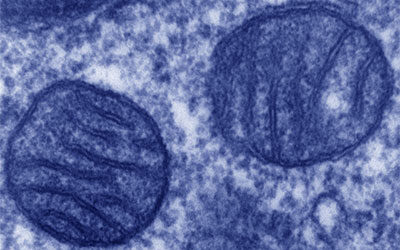I’ve always heard about food-combining but never paid much attention to it. Can you explain what it is and the basic principles for starting it? Thanks!
Donna’s response:
The process of digesting each meal takes a great deal of energy so you want to increase your ability to digest or your “digestive fire.” But what happens if your digestion is not working properly, like so many Americans today?
The undigested food stays in your digestive tract and putrefies, creating a toxic environment that makes your blood more acidic and allows yeast, viruses, cancer cells and parasites to grow inside you. In essence, your inner ecosystem is damaged and you are more prone to illness.
Proper food combining is a system of eating foods that combine together efficiently to assist digestion so that your digestive tract does not have to work so hard to give you the nutrients you need for energy. You can learn the basics with 3 simple guidelines.
Read more about the principles of food combining in The Body Ecology Diet. It’s also packed with delicious recipes and sample menus!
1. Eat Fruits Alone on an Empty Stomach
For anyone just starting on the Body Ecology program, I recommend avoiding most fruits—they have a high concentration of natural sugars that encourage the growth of yeast and other pathogens.
The exceptions are sour fruits like lemons and limes, unsweetened juices from cranberries and black currants, and pomegranates. These fruits are very low in sugars and are safe to eat, even in the initial, more limited phase of the program.
Once your inner ecosystem is restored (usually within 3 months of remaining on stage one of The Diet), you can introduce other low-sugar fruits like grapefruit and kiwis, as well as pineapple, blueberries, and strawberry. These sour fruits combine best with kefir and yogurt made from milk and sprouted seeds and nuts. Nuts, seeds and dairy foods including cheese are called “protein fats” because they truly are a protein and a fat combined together by nature.
In the kitchen: Start your morning with a glass of warm water and lemon juice to hydrate your body and cleanse and tone your digestive system. Lemon and lime juice can be eaten with animal protein for flavor and to enhance digestion.
2. Eat Proteins with Non-Starchy Vegetables and/or Ocean Vegetables
When you eat proteins like poultry, fish, meat, and eggs, your stomach secretes hydrochloric acid and the enzyme pepsin to break down the food in a highly acidic environment. When you eat starches like potatoes or bread, your stomach secretes the enzyme ptyalin to create an alkaline condition.
If you eat proteins and starches together, they tend to neutralize each other and inhibit digestion. The poorly-digested food travels through the digestive tract reaching the intestines where it putrefies and causes your blood to become acidic. It also provides a welcome environment for disease-causing pathogens!
To keep this from happening, avoid combining proteins and starches (including grains, like rice, and starchy vegetables, like potatoes) in the same meal. Instead, have non-starchy vegetables and ocean vegetables with your protein meals to achieve optimal digestion.
Non-Starchy Vegetables Include: Leafy greens, broccoli, asparagus, cauliflower, carrots, bok choy, cabbage, celery, lettuces, green beans, garlic, fennel, onions, chives, turnips, sprouts, red radish, yellow squash, zucchini, cucumber, beets
Non-starchy vegetables and ocean vegetables digest well in acid OR alkaline environments, so they go with anything: proteins, oils and butter, grains, starchy vegetables, lemons and limes, and soaked and sprouted nuts and seeds..
Read Why You Need to Cook Those Vegetables for Maximum Nutrition to learn some important tips for preparing these vegetables for optimum health—and to avoid some risks associated with certain raw vegetables.
In the kitchen: Pair poached fish with stir-fried vegetables, roasted chicken with a leafy green salad and/or a non-starchy vegetable soup. Or try a salad that has veggies that are steamed and chilled (broccoli, cauliflower, green beans plus also a variety of raw vegetables (shredded carrots, cucumber, yellow squash) with lightly grilled salmon and a lemon-garlicy dressing.
3. Eat Grains and Starchy Vegetables with Non-Starchy and/or Ocean Vegetables
There are four grain-like seeds on The Body Ecology Program: amaranth, quinoa, buckwheat and millet. These ancient grains are high in protein, gluten-free, rich in B vitamins and feed the beneficial bacteria in your inner ecosystem. Read more about the risks of consuming conventional grains and how to prepare Body Ecology grains at home.
Starchy Vegetables Include: Acorn and butternut squash, lima beans, peas, corn, water chestnuts, artichokes and red skinned potatoes (red skinned potatoes are the only potatoes included in the Body Ecology program because they have fewer sugars than other kinds of potatoes).
In the kitchen: Make hearty millet casserole with a green leafy salad and yellow squash sautéed in butter. Or try acorn squash stuffed with curried quinoa with the ocean vegetable hijiki and onions. Warming grain soups are also good, especially in winter.
With food combining and the Body Ecology principles, you’ll find yourself eating simpler meals that nourish your body. You’ll also digest your food better and supply your body with even more nutrients. As your digestion improves, you’ll have more energy and vitality, freeing up your body to come into balance, heal and stay naturally slim!
I believe that Body Ecology is the foundation for wellness that can turn around our current health crisis. Try the principle of food combining today and read an overview of the 7 Body Ecology principles to familiarize yourself with other components of the program. With Body Ecology, you can truly eat and drink to good health!
Donna










0 Comments